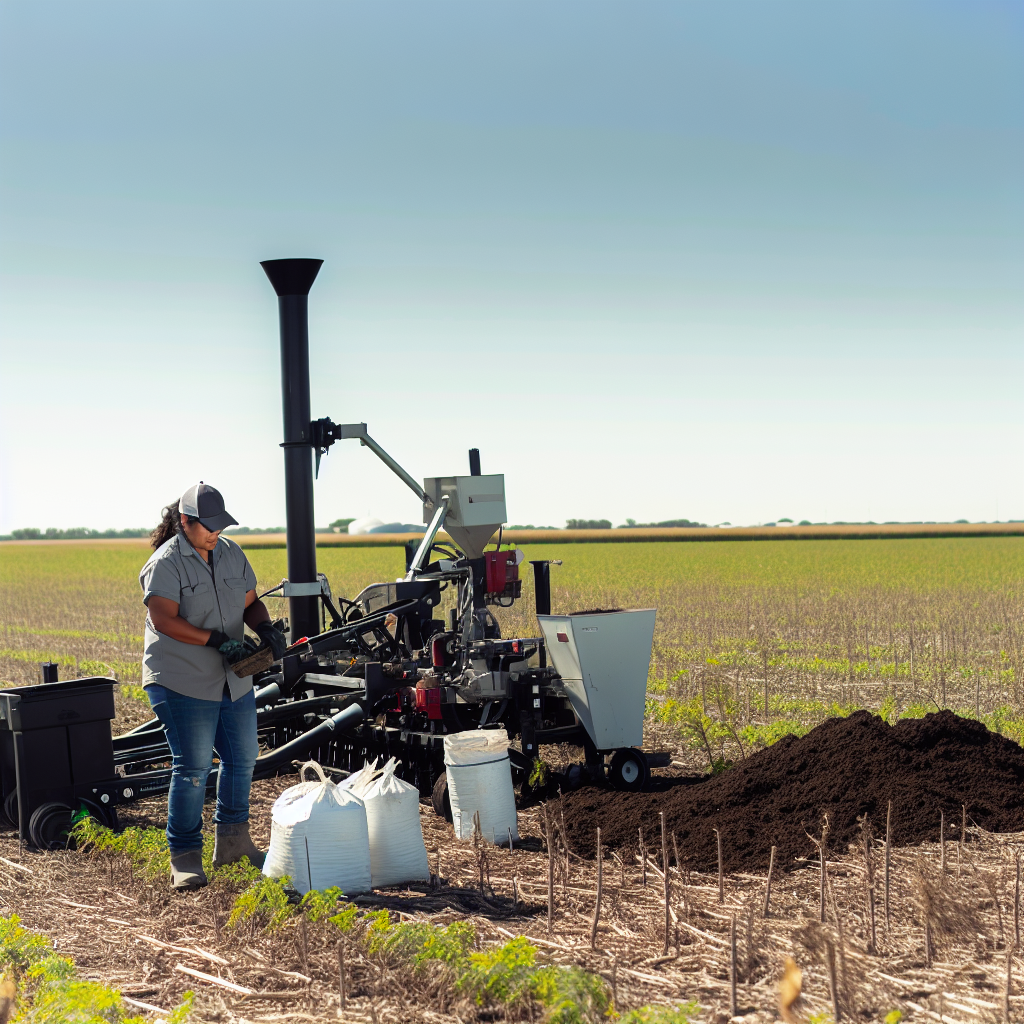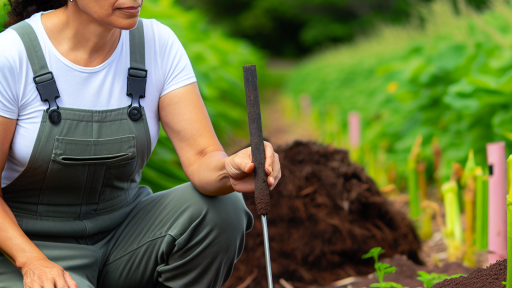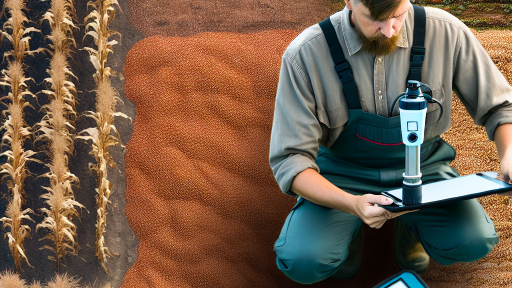Introduction to Advanced Mulching Methods
Advanced mulching methods play a crucial role in sustainable agriculture.
These techniques enhance soil health and conserve moisture.
Moreover, they suppress weeds and improve crop yields.
Farmers are increasingly adopting new materials and technologies.
This shift is vital for addressing environmental challenges.
Understanding Different Types of Mulch
Mulching materials can be organic or inorganic.
Organic mulches include straw, wood chips, and compost.
These materials decompose, enriching the soil over time.
On the other hand, inorganic mulches consist of plastic and stones.
These options offer durability and long-lasting weed control.
Benefits of Advanced Mulching Techniques
Utilizing advanced mulching methods provides numerous benefits.
They help retain soil moisture, especially during dry periods.
This practice reduces the need for frequent irrigation.
Additionally, mulches protect soil from erosion.
Consequently, farmers can maintain healthier ecosystems.
Transform Your Agribusiness
Unlock your farm's potential with expert advice tailored to your needs. Get actionable steps that drive real results.
Get StartedInnovative Materials for Mulching
Modern mulching techniques involve innovative materials.
Bio-based films are becoming popular among farmers.
These films are biodegradable, minimizing waste accumulation.
Similarly, recycled paper and cardboard promote sustainability.
Farmers can efficiently create a nutrient-rich environment using these materials.
Integrating Technology with Mulching Practices
Technology enhances the efficiency of mulching practices.
For example, precision agriculture tools optimize mulch application.
These tools help determine the best types and amounts of mulch.
Moreover, sensors can monitor soil health and moisture levels.
This data guides farmers in making informed decisions.
Case Studies in Successful Mulching Applications
Several farms exemplify successful advanced mulching applications.
The Green Valley Farm has successfully employed straw mulching.
This approach led to a 30% increase in tomato yields.
Similarly, Riverbend Organic Farms used recycled paper mulch.
As a result, they reduced water usage by 20%.
These examples inspire further innovation in sustainable practices.
Benefits of Mulching in Sustainable Agriculture
Conserving Soil Moisture
Mulching significantly reduces soil evaporation.
This method helps maintain adequate moisture levels.
As a result, crops can thrive, even in dry conditions.
Additionally, moisture retention minimizes irrigation needs.
Suppressing Weeds
Applying mulch effectively suppresses weed growth.
Weeds compete with crops for essential nutrients.
By covering the soil, mulch reduces light availability for weeds.
Consequently, farmers spend less time on weeding.
Showcase Your Farming Business
Publish your professional farming services profile on our blog for a one-time fee of $200 and reach a dedicated audience of farmers and agribusiness owners.
Publish Your ProfileEnhancing Soil Health
Organic mulches decompose, enriching the soil over time.
This process increases soil organic matter content.
Healthy soil supports beneficial microorganism activity.
Moreover, it improves soil structure and aeration.
Regulating Soil Temperature
Mulching helps stabilize soil temperatures.
This action protects plant roots from temperature extremes.
Consequently, it fosters healthier crop growth.
Mulch acts as insulation during cold nights and hot days.
Reducing Soil Erosion
Mulch cover protects the soil from wind and water erosion.
By preventing soil displacement, it preserves vital nutrients.
Moreover, sustainable mulch practices enhance land sustainability.
Providing Nutrient Sources
Organic mulches serve as slow-release fertilizers.
As they decompose, they provide essential nutrients to plants.
This aspect aids in reducing the need for synthetic fertilizers.
In return, it fosters healthier crop development.
Encouraging Biodiversity
Mulching supports various organisms in the soil ecosystem.
It provides habitats for beneficial insects and microorganisms.
As a result, biodiversity increases around farm areas.
Ultimately, this promotes a healthier agricultural environment.
Types of Advanced Mulching Materials
Organic Materials
Organic mulching materials are derived from natural sources.
They include leaves, grass clippings, straw, and wood chips.
These materials decompose over time, enriching the soil.
Consequently, they improve soil structure and fertility.
Additionally, organic mulches retain moisture effectively.
They help regulate soil temperature throughout the seasons.
Moreover, organic mulches suppress weed growth naturally.
Farmers can source these materials locally, reducing costs.
Inorganic Materials
Inorganic mulching materials consist of synthetic or non-biodegradable substances.
Common examples include plastic sheeting and landscape fabric.
These materials can last several seasons without breaking down.
They provide effective weed control and moisture retention.
Inorganic mulches also help to warm the soil earlier in spring.
However, they do not improve soil quality as organic mulches do.
Farmers must manage them carefully to avoid environmental impacts.
Choosing the Right Material
The choice between organic and inorganic mulches depends on farming goals.
Organic materials are ideal for enhancing soil health.
Inorganic options work well for long-term weed management.
Farmers should consider the crop type and local conditions.
Ultimately, the right choice can maximize agricultural sustainability.
Uncover the Details: Cover Crops and Carbon Sequestration Benefits
Showcase Your Farming Business
Publish your professional farming services profile on our blog for a one-time fee of $200 and reach a dedicated audience of farmers and agribusiness owners.
Publish Your ProfileTechniques for Effective Mulching
Layering Methods
Layering is vital for effective mulching in agriculture.
This method involves placing multiple types of materials on the soil.
Each layer serves a specific purpose in enhancing soil health.
Begin with a broad base of organic matter like straw or wood chips.
Next, add a layer of green materials, such as grass clippings.
This combination promotes microbial activity in the soil.
Moreover, it helps retain moisture during dry periods.
Ensure proper thickness for each layer to manage weed growth.
Ultimately, effective layering enhances nutrient density in crops.
Application Techniques
Proper application techniques ensure successful mulching benefits.
Begin by preparing the soil prior to applying mulch.
This involves removing existing weeds and loosening the soil surface.
Then, spread mulch evenly across the desired area.
Maintain a depth of 2 to 4 inches for optimal results.
Use a rake to create an even layer, avoiding soil compaction.
Regularly check the mulch for erosion or wear over time.
Replenish mulch as necessary to maintain effectiveness.
Adopt these techniques to maximize the benefits of mulching.
Material Selection
Selecting the right materials plays a significant role in mulching success.
Organic materials, such as leaves, straw, and shredded bark, are excellent choices.
These materials decompose over time, enriching the soil.
Avoid using materials that might introduce pests or diseases.
This includes diseased plant matter or chemically treated wood.
Consider local availability of materials to reduce costs.
Also, choose materials that retain moisture to benefit plants effectively.
Experimenting with combinations can yield superior mulching results.
Ultimately, effective material selection promotes healthy plant growth.
Delve into the Subject: Water Conservation Practices in Organic Crop Farming
Impact of Mulching on Soil Health and Crop Yield
Enhancing Soil Structure
Mulching improves soil structure significantly.
It helps in maintaining optimal moisture levels.
As a result, crops benefit from reduced water stress.
Furthermore, mulched soil experiences less erosion.
This stability allows roots to grow deeper.
Promoting Nutrient Availability
Organic mulches decompose, enriching the soil.
This process releases essential nutrients over time.
Consequently, crops can access more available nutrients.
Moreover, increased microbial activity enhances soil fertility.
This boost increases overall crop yield substantially.
Weed Suppression
Mulching acts as an effective barrier against weeds.
It blocks sunlight, preventing weed seed germination.
Showcase Your Farming Business
Publish your professional farming services profile on our blog for a one-time fee of $200 and reach a dedicated audience of farmers and agribusiness owners.
Publish Your ProfileConsequently, crops experience less competition for resources.
This results in healthier plants and increased yields.
Additionally, managing weeds minimizes labor costs.
Temperature Regulation
Mulch helps regulate soil temperature.
It keeps soil cooler in hot weather.
Likewise, it insulates the soil during cold periods.
This temperature stability ensures better plant growth.
Furthermore, it enhances the root development process.
Moisture Conservation
Mulching reduces evaporation rates from the soil.
This conservation leads to significant water savings.
As a result, crops require less frequent irrigation.
Additionally, consistent soil moisture supports healthy growth.
Ultimately, this practice contributes to sustainable farming.
Explore Further: Economic Advantages of Using Cover Crops on Farms
Innovative Mulching Technologies
Biodegradable Mulches
Biodegradable mulches offer a sustainable alternative to traditional plastic options.
They decompose over time, enriching the soil with organic matter.
This process reduces the need for chemical fertilizers.
Moreover, these mulches help in retaining soil moisture effectively.
Farmers can choose from materials like corn starch and paper products.
These options minimize environmental impact significantly.
Additionally, they contribute to healthier ecosystems.
Research shows that crops grown under biodegradable mulches yield better results.
As a result, farmers experience increased productivity and sustainability.
Geotextiles in Mulching
Geotextiles provide robust support for soil stabilization and weed control.
These fabrics allow water and nutrients to pass through while blocking sunlight.
Hence, they suppress weed growth effectively.
Geotextiles are durable and can last multiple growing seasons.
They offer flexibility in application, catering to various crops and soil types.
Furthermore, they can be recycled, contributing to a circular economy.
Farmers report reduced labor costs and improved yields using geotextiles.
This technology represents a significant advancement in sustainable agriculture.
Overall, integrating geotextiles enhances soil health and crop productivity.
Uncover the Details: Seasonal Trends In Pest And Disease Forecasting

Case Studies: Successful Implementation of Advanced Mulching Practices
Introduction to Case Studies
Case studies highlight real-world applications of mulching techniques.
They showcase successful practices across various agricultural settings.
Organic Farm in California
A family-owned organic farm in California adopts advanced mulching practices.
They utilize straw and wood chips as their primary mulching materials.
This method improves soil moisture retention significantly.
Consequently, the farm experienced a 25% increase in crop yield.
Additionally, pest populations decreased, which lowered pesticide use.
Showcase Your Farming Business
Publish your professional farming services profile on our blog for a one-time fee of $200 and reach a dedicated audience of farmers and agribusiness owners.
Publish Your ProfileSmallholder Farm in Kenya
A smallholder farm in Kenya implemented green manure mulching.
They used cover crops like legumes to enhance soil fertility.
This practice prevented soil erosion and improved structure.
As a result, farmers reported higher yields during dry seasons.
Moreover, the community adopted similar methods, promoting sustainability.
Research Station in Australia
A research station in Australia conducted trials with different mulching materials.
They compared plastic sheets, organic mulch, and gravel covers.
Plastic mulching outperformed other methods in weed suppression.
However, organic mulches provided better water retention.
This study encouraged farmers to choose materials based on specific needs.
Community Garden in New York
A community garden in New York City implemented organic mulching techniques.
They sourced materials like leaves, grass clippings, and compost.
The gardens flourished, attracting more local participants.
Additionally, they organized workshops to educate about mulching benefits.
This community effort strengthened local food systems significantly.
Innovations in Mulching Techniques
Innovative techniques enhance traditional mulching practices.
For example, some farms are now experimenting with biodegradable films.
These films break down, enriching the soil without harmful residue.
Such innovations promise improved efficiency and sustainability.
Farmers are excited about the potential of these technologies.
Challenges and Considerations in Advanced Mulching
Soil Health Impacts
Mulching significantly affects soil health and structure.
However, certain materials can lead to nutrient imbalances in the soil.
Moreover, organic mulches may decompose quickly, which can disrupt soil microbiology.
It is crucial to select the right type of mulch for specific crops.
Proper testing of soil can help determine the best materials.
Cost and Availability
Advanced mulching techniques can be costly and may require specialized equipment.
Farmers need to evaluate the long-term benefits versus short-term costs.
Additionally, sourcing eco-friendly materials can be challenging.
Local availability of mulch types may vary by region.
Farmers should explore community resources for sustainable material options.
Climate Considerations
Climate plays a vital role in the effectiveness of mulching methods.
For instance, in wet climates, certain mulches may promote fungal growth.
Conversely, in dry regions, mulches can help retain moisture efficiently.
Farmers must consider local weather patterns when selecting mulch materials.
Implementing mulching strategies should align with seasonal changes.
Labor Requirements
Advanced mulching often requires additional labor and maintenance.
Farmers may need skilled labor for proper application techniques.
Furthermore, ongoing maintenance can add to the operational workload.
Automated systems could reduce labor needs; however, they involve higher initial investments.
Assessing labor resources strategically ensures successful implementation.
Showcase Your Farming Business
Publish your professional farming services profile on our blog for a one-time fee of $200 and reach a dedicated audience of farmers and agribusiness owners.
Publish Your ProfilePotential Pest Issues
Certain types of mulch can attract pests, leading to crop damage.
Organic mulches might invite rodents and insects if not managed properly.
Preventive measures should be in place to monitor pest populations.
Integrated pest management strategies can enhance crop protection.
Regular inspection of mulched areas is essential for early detection.
Future Trends: The Role of Mulching in Sustainable Agricultural Practices
Enhancing Soil Health
Mulching significantly enhances soil health.
It promotes moisture retention in the soil.
This process reduces the need for frequent watering.
Moreover, mulch prevents soil erosion by protecting the surface.
Healthy soil also supports diverse microbial activity.
Weed Suppression Benefits
Effective mulching suppresses weed growth.
Weeds compete with crops for nutrients and water.
By blocking sunlight, mulch minimizes weed germination.
This suppression leads to healthier crop yields.
As a result, farmers can reduce herbicide usage.
Temperature Regulation
Mulch regulates soil temperature effectively.
It keeps soil cooler in hot weather.
Conversely, it insulates the soil during colder months.
This temperature regulation supports plant health and growth.
Carbon Sequestration Opportunities
Mulching aids in carbon sequestration in agricultural systems.
Organic mulches break down, adding carbon to the soil.
Healthy soils can store more carbon dioxide.
Thus, this practice contributes to climate change mitigation.
Implementing Innovative Mulching Techniques
Farmers increasingly adopt innovative mulching techniques.
Biodegradable materials offer sustainable options for mulch.
These alternatives reduce plastic waste in farming.
Additionally, living mulches provide dual benefits for crops.
Techniques like cover cropping enhance overall sustainability.
Integration with Technology
Modern technology enhances mulching practices.
Farmers utilize sensors to monitor soil conditions.
This data optimizes mulch applications based on plant needs.
Automation streamlines the mulching process significantly.
Such integration boosts efficiency and sustainability in agriculture.
Additional Resources
Ch 3. Cultural Weed Management – SARE
The Indigenous Origins of Regenerative Agriculture – National …




